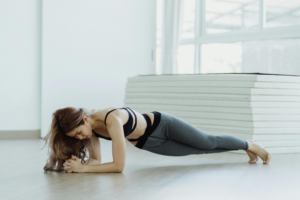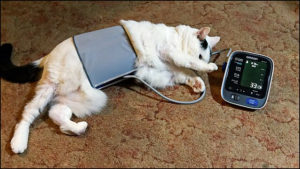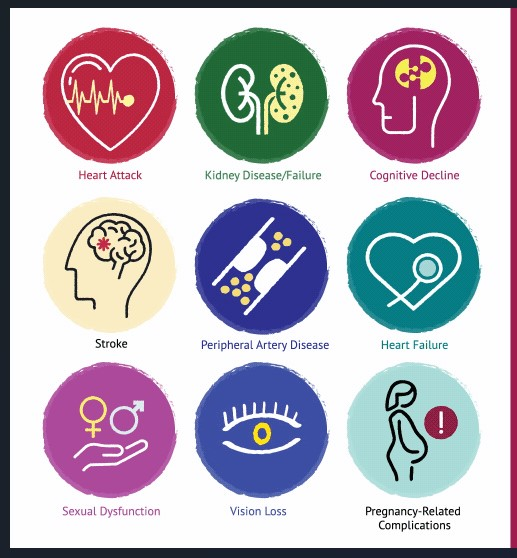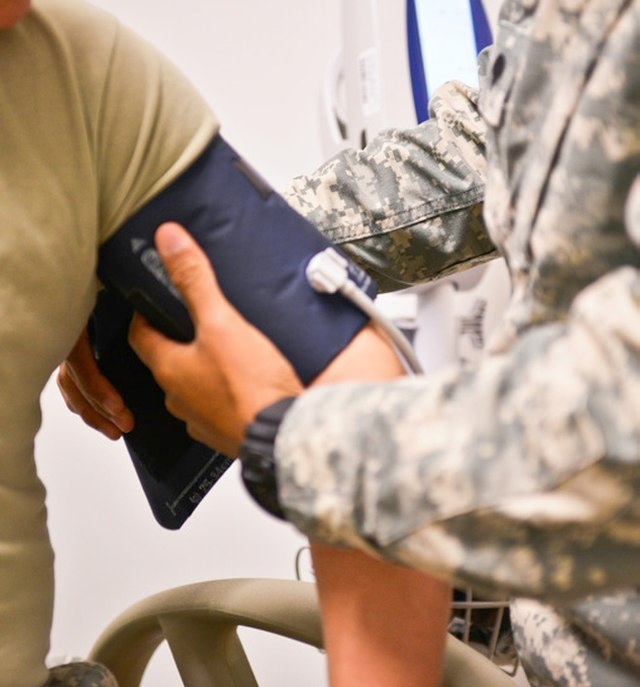Exercise for High Blood Pressure: The Complete 2025 Workout Breakdown
Your doctor just told you your blood pressure is too high, and now you’re wondering: what kind of exercise can actually help? Maybe you’ve been walking for years but your numbers haven’t budged. Or perhaps you’re intimidated by the gym and don’t know where to start.
Here’s some encouraging news: exercise for high blood pressure works incredibly well, but the most effective types might surprise you. Recent groundbreaking research has turned traditional exercise recommendations upside down.
The Exercise Revolution: What 2024 Research Reveals
For decades, doctors have recommended walking, running, and cycling as the go-to exercises for high blood pressure. But 2023 research published in the British Journal of Sports Medicine analyzed 270 studies and found something remarkable: static exercises where you don’t move – called isometric exercises – are actually the most effective for lowering blood pressure.
This discovery came from researchers at Canterbury Christ Church University who wanted to find the best hypertension workout approach. They looked at five different types of exercise:
- Aerobic exercise (walking, running, cycling)
- Dynamic resistance training (lifting weights, squats)
- High-intensity interval training (HIIT)
- Combined training (mixing different types)
- Isometric exercise (holding static positions)
The results were clear: isometric training reduced both systolic and diastolic blood pressure more than any other type of exercise.
Even Small Amounts Help
Additional 2024 research from the University of Sydney found that adding just five minutes of vigorous activity – like stair climbing or uphill walking – to your daily routine can lower blood pressure. This study tracked over 14,000 people and showed that even tiny amounts of exercise make a measurable difference.
Understanding Isometric Exercise: The New Champion
You might be wondering: what exactly is isometric exercise, and why does it work so well for high blood pressure?
Isometric exercise involves contracting your muscles without moving your joints. Think of it as flexing and holding. When you hold these positions, you create a unique type of stress on your cardiovascular system.
Here’s what happens during an isometric hold:
This process is different from traditional cardio, where your heart rate increases but blood vessel compression isn’t sustained for extended periods.
The Most Effective Exercises for High Blood Pressure
Let’s break down the most effective exercises based on current research, starting with the champions and working our way through other beneficial options.
1. Wall Sits: The Ultimate Blood Pressure Buster
Wall sits emerged as the single most effective exercise for lowering blood pressure in the landmark study. Here’s how to do them correctly:
Perfect Wall Sit Technique:
- Stand with your back against a wall, feet hip-width apart
- Step your feet 1-2 steps away from the wall
- Slide down until your thighs are parallel to the floor (90-degree angle)
- Keep your knees directly above your ankles
- Hold for 20-30 seconds initially, building up to 2 minutes
- Keep breathing steadily – don’t hold your breath
The research shows optimal results come from doing four sets of two minutes each, with two-minute rest breaks between sets, three times per week.
2. Planks: Full-Body Isometric Power

Planks engage multiple muscle groups and provide excellent blood pressure benefits. Start with these variations:
3. Glute Bridges: Lower Body Focus
These target your glutes and hamstrings while providing blood pressure benefits:
- Lie on your back with knees bent, feet flat on the floor
- Squeeze your glutes and lift your hips toward the ceiling
- Hold for 30 seconds to 2 minutes
- Focus on squeezing your glutes throughout the hold
4. Hand Grips: Convenient Anywhere Exercise
Hand grip exercises were among the isometric exercises studied and showed significant benefits. You can use a stress ball, grip strengthener, or even just make fists and squeeze.
Traditional Cardio: Still Important for Your Hypertension Workout
While isometric exercises are the new champions, traditional aerobic exercise remains incredibly important for overall cardiovascular health and blood pressure management.
Meta-analyses show that aerobic exercise training lowers blood pressure by 5-7 mmHg on average, with benefits that extend beyond just blood pressure numbers.
| Exercise Type | Blood Pressure Reduction | Time to See Results | Additional Benefits |
|---|---|---|---|
| Isometric (Wall sits, planks) | 8-11 mmHg systolic | 2-4 weeks | Core strength, joint stability |
| Aerobic (Walking, cycling) | 5-7 mmHg systolic | 4-8 weeks | Heart health, endurance |
| Resistance training | 2-3 mmHg systolic | 6-8 weeks | Muscle strength, bone density |
| High-intensity intervals | 4-6 mmHg systolic | 3-6 weeks | Time efficiency, fitness |
The Best Cardio Exercises for High Blood Pressure
- Walking: Start with 10-15 minutes daily, gradually increase to 30-45 minutes
- Swimming: Excellent low-impact option that’s easy on joints
- Cycling: Both stationary and outdoor cycling provide great benefits
- Dancing: Fun way to get your heart rate up while improving coordination
- Stair climbing: Even 5 minutes daily can make a difference
Creating Your Complete Hypertension Workout Plan
The most effective approach combines different types of exercise for maximum blood pressure benefits. Research shows that combining isometric and aerobic exercise provides the best results.

The Perfect Weekly Schedule
Beginner-Friendly Starting Point
If you’re new to exercise or haven’t been active recently, start here:
Week 1-2:
- Wall sits: 4 sets of 20 seconds, 3x per week
- Walking: 10 minutes daily
- Simple planks: 2 sets of 15 seconds, 3x per week
Week 3-4:
- Wall sits: 4 sets of 30-45 seconds, 3x per week
- Walking: 15-20 minutes daily
- Planks: 3 sets of 20-30 seconds, 3x per week
Week 5+:
- Wall sits: 4 sets of 1-2 minutes, 3x per week
- Walking: 25-30 minutes most days
- Planks: 3 sets of 45-60 seconds, 3x per week
- Add other isometric exercises as desired
The Science Behind Post-Exercise Blood Pressure Benefits
One of the most exciting discoveries in exercise research is something called post-exercise hypotension – the temporary drop in blood pressure that occurs after working out.
A comprehensive analysis found that exercise creates immediate blood pressure reductions of 3-5 mmHg that can last for several hours after your workout. This means you get both immediate and long-term benefits from every exercise session.

When You’ll See Results
Here’s a realistic timeline of what to expect:
- Immediately after exercise: Blood pressure drops 3-5 mmHg for 2-12 hours
- After 2 weeks: Resting blood pressure may start to improve
- After 4-6 weeks: More consistent blood pressure improvements
- After 8-12 weeks: Maximum benefits typically achieved
Safety Considerations and When to Be Careful
Exercise for high blood pressure is generally very safe, but there are important considerations to keep in mind.
Important Safety Guidelines:
- Start slowly if you’re new to exercise
- Stop if you feel dizzy, chest pain, or severe shortness of breath
- Don’t hold your breath during isometric exercises
- Stay hydrated, especially if you take diuretic medications
- Check with your doctor before starting if you have heart disease
Blood Pressure Medications and Exercise
If you’re taking blood pressure medications, exercise can enhance their effectiveness. However, this also means you might experience lower blood pressure than expected, especially when starting a new routine.
Monitor your blood pressure regularly and work with your healthcare provider to adjust medications as needed. Some people can reduce or eliminate medications as their fitness improves, but this should always be done under medical supervision.
Exercise vs. Other Blood Pressure Approaches
How does exercise stack up against other proven methods for managing high blood pressure? Let’s put it in perspective:
| Approach | Blood Pressure Reduction | Time to Results | Cost |
|---|---|---|---|
| Isometric exercise | 8-11 mmHg | 2-4 weeks | Free |
| Aerobic exercise | 5-7 mmHg | 4-8 weeks | Free to low |
| Weight loss (10 lbs) | 5-10 mmHg | 8-12 weeks | Variable |
| DASH diet | 5-11 mmHg | 2-8 weeks | Low to moderate |
| Medication (single drug) | 8-15 mmHg | 2-4 weeks | $20-100+ monthly |
The beauty of exercise is that it combines with other approaches for even greater benefits. When you combine regular exercise with approaches like the DASH diet and other proven blood pressure management strategies, the effects often add up to more than the sum of their parts.
Overcoming Common Exercise Barriers
Let’s address the most common reasons people struggle to stick with exercise for blood pressure management:
Common Excuses
• “I don’t have time for the gym”
• “I’m too out of shape to start”
• “Exercise is boring”
• “I can’t afford a gym membership”
• “I don’t see results fast enough”
Reality Check
• Wall sits take 8 minutes, 3x per week
• Start with 20-second holds
• Mix activities you enjoy
• Effective exercises are free
• Blood pressure drops immediately after exercise
Making Exercise Convenient
The most effective hypertension workout is one you’ll actually do consistently. Here are strategies to make it stick:
- Use micro-workouts: Three 10-minute sessions work as well as one 30-minute session
- Exercise during TV time: Do wall sits during commercial breaks
- Take walking meetings: Conduct phone calls while walking
- Use stairs whenever possible: Even 5 minutes of stair climbing helps
- Schedule it like an appointment: Put exercise time on your calendar
Tracking Your Progress

Monitoring your improvements helps maintain motivation and shows that your hypertension workout routine is working.
What to Track
Essential Measurements:
- Blood pressure readings (same time of day, before exercise)
- How long you can hold isometric positions
- How you feel during and after exercise
- Sleep quality and energy levels
- Resting heart rate (tends to decrease with fitness)
Using Technology to Help
Simple tools can make tracking easier:
- Smartphone apps: Many free apps track blood pressure and exercise
- Home blood pressure monitor: Check readings regularly
- Fitness tracker: Monitor heart rate and activity levels
- Simple journal: Even a notebook can track progress effectively
Advanced Strategies for Better Results
Once you’ve mastered the basics, these advanced techniques can enhance your results:
Progressive Overload for Isometric Exercise
Just like with traditional strength training, you can gradually increase the challenge:
- Increase hold time: Add 10-15 seconds weekly
- Add more sets: Work up to 5-6 sets when ready
- Try harder variations: Single-leg wall sits, elevated feet planks
- Combine exercises: Do wall sits immediately followed by planks
Timing Your Workouts
Research suggests that morning exercise may provide slightly better blood pressure benefits, though any time you can exercise consistently is the best time for you.
Special Considerations for Different Groups
Older Adults
Isometric exercises are particularly well-suited for older adults because they’re low-impact and don’t require special equipment. Start with shorter holds and focus on proper form.
People with Joint Issues
Wall planks and glute bridges put less stress on joints than floor exercises. Swimming and water aerobics are excellent cardio options for those with arthritis or joint pain.
Busy Professionals
Office-friendly exercises like wall sits and desk push-ups can be done in work clothes. Even 5-minute breaks for stair climbing provide benefits.
Those with Limited Mobility
Chair-based exercises, arm exercises, and hand grip exercises can provide blood pressure benefits even for those with mobility limitations.
The Long-Term Picture: Exercise as Medicine
When you make exercise for high blood pressure a regular part of your life, you’re doing more than just lowering numbers on a blood pressure cuff. You’re engaging in one of the most powerful forms of preventive medicine available.
Regular exercise provides benefits that extend far beyond blood pressure:
- Reduced heart disease risk: Lower blood pressure directly reduces cardiovascular risk
- Better diabetes management: Exercise improves insulin sensitivity
- Improved mental health: Regular activity reduces anxiety and depression
- Enhanced cognitive function: Better blood flow benefits brain health
- Stronger bones and muscles: Resistance training prevents age-related decline
- Better sleep quality: Regular exercisers report better sleep
Your Next Steps: Starting Today
You now have the knowledge to create an effective exercise program for managing your blood pressure. The key is to start where you are and build gradually.
Here’s your action plan:
The research is clear: exercise is one of the most effective tools for managing high blood pressure. The discovery that simple isometric exercises can be more effective than traditional cardio opens up new possibilities for people who may have struggled with conventional exercise programs.
Whether you choose wall sits, planks, walking, or a combination approach, the most important step is the first one. Your blood pressure will start benefiting immediately, and those benefits will compound over time as you build a sustainable exercise habit.
Start today. Your heart – and your blood pressure numbers – will thank you.
References
- BMJ Group. “Static isometric exercise, such as wall sits, best for lowering blood pressure.” June 2025.
- University of Sydney. “Five minutes of extra exercise a day could lower blood pressure.” ScienceDaily, November 2024.
- Mayo Clinic Health System. “Isometric exercise and blood pressure.” June 2024.
- Healthline. “What Are the Best Exercises for Managing High Blood Pressure?” April 2025.
- Geisinger. “What’s the Best Exercise for High Blood Pressure?” May 2024.
- PMC. “Exercise for Hypertension: A Prescription Update Integrating Existing Recommendations with Emerging Research.”
- PMC. “Acute Effects of Exercise on Blood Pressure: A Meta-Analytic Investigation.”
- PMC. “Evidence for exercise training in the management of hypertension in adults.”
- Mayo Clinic. “Exercise: A drug-free approach to lowering high blood pressure.” December 2024.
- British Heart Foundation. “Can wall squats and planks lower your blood pressure?”
- AARP. “The Best Exercise to Lower Blood Pressure.” March 2024.
- JAMA Cardiology. “Effect of Exercise Training on Ambulatory Blood Pressure Among Patients With Resistant Hypertension.” November 2021.
Medical Disclaimer
This article is for informational purposes only and doesn’t constitute medical advice. High blood pressure is a serious medical condition that requires professional supervision. Always consult with a qualified healthcare provider before starting any new exercise program, especially if you have cardiovascular disease, take blood pressure medications, or have other health conditions. Individual results may vary, and this information shouldn’t replace professional medical guidance.
Author Bio: The Remedy Verified Team translates complex metabolic science into clear, practical strategies for everyday health.



